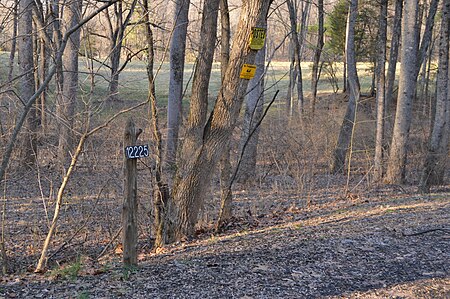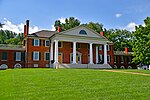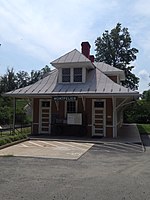Rockwood (Montpelier Station, Virginia)
Carpenter Gothic houses in VirginiaCentral Virginia Registered Historic Place stubsGreek Revival houses in VirginiaHouses completed in 1848Houses in Orange County, Virginia ... and 2 more
Houses on the National Register of Historic Places in VirginiaNational Register of Historic Places in Orange County, Virginia

Rockwood is a historic house in the vicinity of Montpelier Station, Orange County, Virginia. It was built in 1848 and is a 2+1⁄2-story frame house which was designed in a blend of the Gothic Revival and Greek Revival styles. The house sits on a brick English basement and has an offset sharply pitched cross-gable roof.It was added to the National Register of Historic Places on July 5, 2001.
Excerpt from the Wikipedia article Rockwood (Montpelier Station, Virginia) (License: CC BY-SA 3.0, Authors, Images).Rockwood (Montpelier Station, Virginia)
Chicken Mountain Road,
Geographical coordinates (GPS) Address Nearby Places Show on map
Geographical coordinates (GPS)
| Latitude | Longitude |
|---|---|
| N 38.208611111111 ° | E -78.161111111111 ° |
Address
Chicken Mountain Road
Chicken Mountain Road
22957
Virginia, United States
Open on Google Maps











